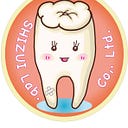Management of Transferring and Viewing Rights with Thumbnails of Medical Datasets Recorded on a Blockchain as NFTs.
Ken-ichi Tezuka, Masachika Fujikawa and Tomohiro Mitsuguchi
Department of Renetative Medicine Gifu University Graduate School of Medicine, Center for One Medicine Innovative Translational Research (COMIT), Shizui Laboratory Co.,Ltd.
Introduction
Most of the medical datas, such as CT and MRI scans (medical image data), are stored in local servers settled in hospitals. They consist of a large numbers of digital pictures generated by those machines and they are protected by hospitals’ security systems. Therefore, they can not be accessed from outside of those hospitals even by the patients from whom those medical image data originated from. Then, patients do not have rights to decide the usage of those data, even when they want to transfer dataset to other hospitals for further treatment.
Recently, Non-Fungible Tokens (NFTs) are attracting large interests by connecting digital data to blockchain tokens proving possession of the data. Those NFTs can be transferred with various types of rights associated with them by the owners (Fig. 1).

Most of the CT and MRI data can be represented by a small thumbnail pictures that resembles the original dataset. We thought that after carefully removing sensitive and personal informations, they can be connected with NFTs. In this manuscript we tried to emulate transferring and viewing rights with ownership of those thumbnail NFTs. The small size of a thumbnail picture is suitable to be stored securely even on blockchains, and can be used to control the ownerships of dataset independent of hospital security system.
Methods and Results
First, we prepared two representative pictures, one from CT dataset of mouse head and the other from monkey mandible (Fig. 2). The sizes of those thumbnails were 18k and 148k bytes, respectively.


NFT-Drive is a type of on-chain data storage system developed by NFT Drive Co. (Kyoto Japan). Briefly, the data were encoded as base32 and fragmented into small pieces of 1k bytes size to be stored message container of aggregate-bonded transactions of Symbol testnet blockchain.
The generation of NFTs and data storages were conducted by the tool provided by NFT Drive (https://nftdrive-test.net/) using an Symbol testnet account named as Hospital01. Additionally, two testnet accounts, Patient01 and Patient02, were generated representing two independent patients. Patient01 and Patient02 received those NFTs (NFT01 and NFT02) generated by Hospital01 account representing the ownership of those data.
Next, the two patients tried to send the viewing right to the other hospital (Hospital02), where they wanted to use their CT data again. , Patient01 and Patient02 generated four new mosaics using Symbol wallet (T1, T2, V1, and V2) representing transferring (T1, T2) and viewing (V1, V2) rights. They sent one T token to Hospital01 and one V token to Hospital02 to show agreement to send data from Hospital01 to Hospital02. Then, Hospital02 can view the patients’ CT data by confirming two agreements of the patients by verifying the blockchain data using explorer. The entire procedure was done on single blockchain and patients can prove their agreement to transfer and view their CT dataset by simply sign the transactions using their desktop or mobile wallets. Otherwise, they have to visit hospitals multiple times to express agreements in two hospitals. Following is a list of accounts and mosaics viewable on Symbol Block Explorer for testnet.
Patient01: https://testnet.symbol.fyi/accounts/TCYGXPOK74FR5AHSE3UQMLPDBR3N3TAG2ZIWSJA
Patient02: https://testnet.symbol.fyi/accounts/TBV3GTDRVOEQ2QEPFQIH3N56SAFRQJRNRCFHE3Q
Hospital01: https://testnet.symbol.fyi/accounts/TDDBP6DUQYEU5JPEZ42GRFCIUSWQIBDN7Y52VZY
Hospital02: https://testnet.symbol.fyi/accounts/TCURDIJ7ELQKDTX23XK7PAKA2CCZMF2VTRLFSGI
NFT01: https://testnet.symbol.fyi/mosaics/63DB2ACD3DEEA94A
NFT02: https://testnet.symbol.fyi/mosaics/29E11CF2E3E95A10
MosaicT1: https://testnet.symbol.fyi/mosaics/59A8DEB83AF8259F
MosaicT2: https://testnet.symbol.fyi/mosaics/21F897C7F9FD075D
MosaicV1: https://testnet.symbol.fyi/mosaics/63473CFE72BEEB39
MosaicV2: https://testnet.symbol.fyi/mosaics/7DD9B72DD1CC822C
Summary and Conclusion
This article describe a simple and efficient method to control rights to transfer and view CT/MRI data using a blockchain that supports data storage. Because the NFTs are tightly connected with the original data on data storage compatible blockchain, the owner of the NFT can be easily and strictly proven to be the owner of medical image dataset (Fig. 3).

